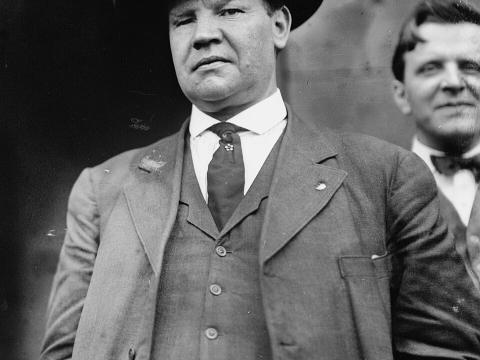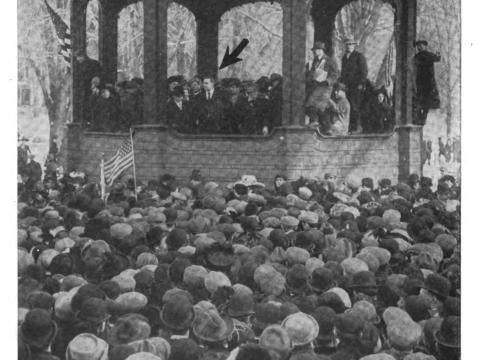An overview of the Little Falls textile strike of 1912. First published as follows in November 2012 in the Industrial Worker (issue 1750, vol. 109, no. 9).

A series of ongoing events have commemorated the tumultuous textile strike that hit Little Falls, N.Y., 100 years ago. Lectures, panel discussions and even a play written about the strike have brought many out to learn about the IWW. The Unitarian Church in Utica, N.Y. celebrated Labor Day by having a sermon of sorts given by a Wobbly about the strike. The strike was a hard-fought battle between a largely immigrant and female textile worker population and their supporters against the industrialists, business elite, and the halls of power in what was once a bustling mill town in the industrial heyday of the Mohawk Valley.
The textile strike was one of many fierce strikes that took place in the Mohawk Valley in the earlier part of the 20th century. Utica, Little Falls and many other smaller cities and towns in the area were important manufacturing and knitting centers in the textile industry. Working conditions were harsh. A predominantly Eastern and Southern European immigrant and young female workforce toiled at the mills, laboring away for 60 hours a week in poorly ventilated, dirty and hazardous environments. At the end of each workday the workers left to spend the few hours they had away from the mills in virtual ghettos and slums that were breeding grounds for disease. It took the forces of labor militancy to create much-needed reforms in the textile industry. The strike in Little Falls was one of the major labor battles of its time and the one union that was up to the task of leading the strike was the Industrial Workers of the World.
The strike happened during a time in U.S. history when many workers became attracted to radical and revolutionary ideas. The Socialist Party (SP) was gaining a foothold in the political system. The 1912 presidential election saw SP and IWW member Eugene Debs win nearly 1 million votes. The mayor of nearby Schenectady, George Lunn, was a socialist and Utica had its own active socialist, anarchist and militant labor organizations. Many of the radicals congregated in what is now Garro’s Drugstore on Bleecker Street. Radicals of every stripe were organizing strikes, political demonstrations and doing whatever they could to improve the lives of the poor and disenfranchised, in the hopes of creating a nation and a world free of starvation, unemployment, poverty, war and oppression.
Instead of settling just for better pay and working conditions, the IWW sought to dramatically reorganize society, industry and the economy. The union envisioned creating a “cooperative commonwealth” where everyone’s needs were met. It would replace the cut-throat profit-driven capitalist system that created a small elite class of people who owned industry and dictated the economy, and a large under-class that created all the wealth, but did not share in the fruits of their labor. The union wanted to create “a new world in the shell of the old,” and fought hard to improve working conditions and create an alternative to capitalism. It still fights for these beliefs to this day.
The IWW had a large influence and was very active in the mines, coalfields, and the timber industry out west, and was actively organizing in the shipyards, factories and textile mills on the east coast. The textile industry organizing erupted into strikes in Lawrence, Lowell and New Bedford, Mass., just before Little Falls. The Little Falls strike started with a spontaneous walkout of workers in the Phoenix Mill on Oct. 9, 1912 following on the heels of a recent law passed in New York limiting the work week for women textile workers to 54 hours from its original 60. The mill owners would not budge so the workers struck to force them to follow the law, improve the work conditions and increase the wages. Soon enough 1,000 workers from the Phoenix Mill and another 1,000 from Gilbert’s Mill walked off the job. The IWW came onto the scene and workers voted to join the union. Public nurse Helen Schloss was involved with the strike from the beginning.
The IWW sent in organizers by train such as the Russian-born Jewish Wobbly Matilda Rabinowitz, Ben Legere, Joseph Ettor, “Big Bill” Haywood and anarchist IWW members Carlo Tresca and Filippo Bochinno. Helen Keller, also a socialist and IWW member, gave critical support to the strike. Haywood and Schloss both came to Utica on separate occasions to drum up support for the strike and setup fundraising committees. Wobblies in Utica held meetings at the Sons of Italy Hall and did all they could to support the strike. Tresca would later come to Utica for anti-fascist activities and demonstrations before he was assassinated in 1943 by a pro-fascist Mafioso.
Workers held daily pickets and parades and were aided by a group of socialists from Schenectady, led by that city’s socialist Mayor Lunn, who was arrested for speaking in support of the strike. Leaders and strike committee members were arrested and jailed and Police Chief Long attempted to violently suppress the strike by attacking peaceful strikers and raiding the Slovak Hall, which acted as the strike headquarters. He let the public know his true feelings about the IWW and strikers when he stated that: “We have a strike on our hands and a foreign element to deal with. We have in the past kept them in subjugation and mean to hold them where they belong.” He did not keep his promise.
The strike ended on Jan. 3, 1913 with the IWW prevailing. The workers’ demands were met, including the 54-hour work week at the previous 60-hour pay. Despite severe government suppression that nearly destroyed the union during the “Red scare,” the IWW still exists today and in many ways continues the struggles the union fought in its early days. The union organizes immigrant workers in New York City sweatshops, created the Starbucks Workers Union and is currently involved in a campaign to create the nation’s first fast food union at Jimmy John’s, among other activities. There are plans underway to form an IWW branch in Utica, but until then we can celebrate the history of the union in Little Falls that fought for a new world in the shell of the old.





Comments